The mango puree pressed from thousands of mangoes will be turned into vegan leather instead of being thrown away. From there, they can become raw materials for the production of wallets, bags, and shoes. But can they compete with the giant leather goods industry? To find out, the following article will introduce Fruitleather’s headquarters, which is producing vegan leather from mangoes in the Netherlands.
Input ingredients
Fruitleather gets about 1,500 mangoes a week from a Dutch importer. During the quality control of the goods sold, this importer needs to randomly cut a certain number of mangoes, and that amount of mangoes will no longer be available for sale. Therefore, one solution that has been proposed to reduce this amount of mango waste is to turn it into leather products. This is a win-win solution, as Fruit Leather will receive free inputs and importers no longer have to pay to dispose of their mangoes.
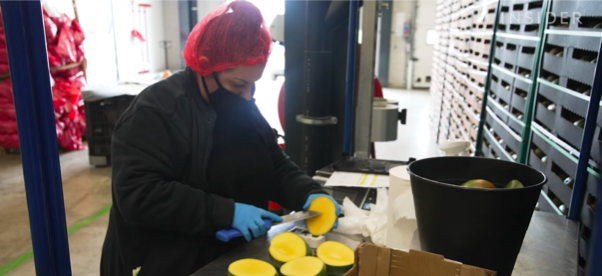
Vegan leather production
First, the mango will be passed through a mill to turn it into a liquid “juice”. The liquid mixture is pumped through a tube into a large tank. The staff then mixes some additives that turn this liquid “juice” into a leather-like material. During this process, staff must conduct parameter checks to ensure the proper properties of the mixture. Next, pour the mixture onto a metal baking tray and spread it evenly to create an even thickness. Then the trays were placed in the dryer overnight. Before drying, they have a light cream color, but after drying, they have a different color depending on the type of mango used.
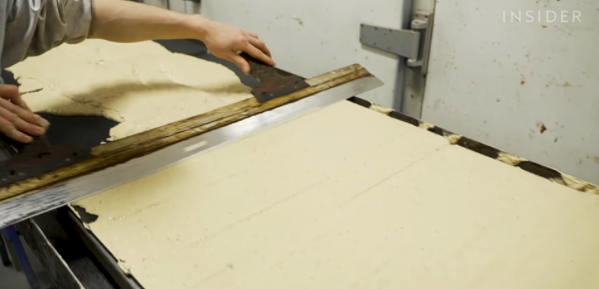
For example, the Palmer mango will give the material a browner color. Keitt mangoes will have a darker color. Finally, the sheets are transferred to the leather finishing facility to be coated with a protective enamel.
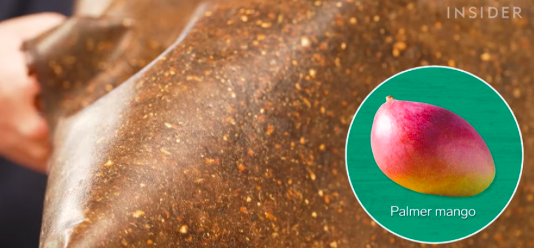
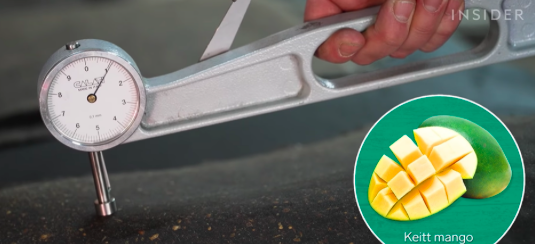
At the treatment facility, staff uses the same process as for conventional leathers, but the reaction temperature requirements are different from other finishes. First, workers measure the thickness of each pelt. Then, they mixed the plastic materials to make the coating on the sheet of material. The material is coated with that resin solution to create a protective surface layer on top of it against external influences. The sheets are then taken to a conveyor belt and passed through an oven at 100°C to help the coating dry. The sheet is then hung on a rack to cool and dry completely. Each sheet of material goes through this process several times to make it more durable.
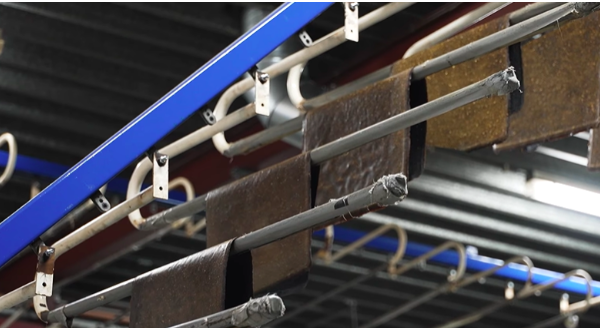
Next, another machine uses heat and pressure to bond the coatings. The final step is to design the leather to look like animal skin using an embossing machine. The skins are then sold to designers around the world. Hugo and Koen first came up with the idea of Fruitleather in 2015. They wanted to turn something worthless into something valuable.
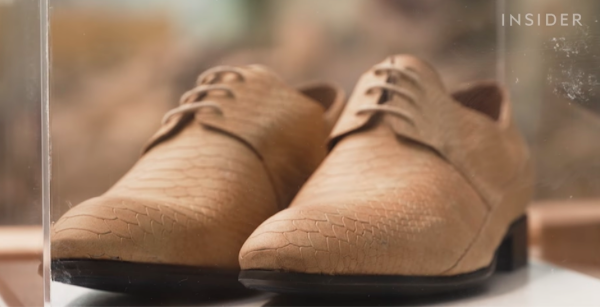
How to figure out the suitable fruit
An important part of the vegan leather production process is deciding which fruit to use. At the beginning, the developers did not know which fruit could make a better material. In fact, during the test, they even tried to use watermelon. But watermelon doesn’t have much fiber – it’s mostly water. They choose mango because it is easy to process and has a high fiber content. In fact, more than half of all mangoes in Europe are imported or traded by the Netherlands, and about 12% of that in the Netherlands is wasted. Therefore, Fruitleather can obtain a huge number of resources as input materials for the production process. That’s why Fruitleather decided to stick with the mango.
Challenges
Hugo and Koen (founders of Fruitleather) argue that genuine leather production from animals can be toxic to both humans and the environment. The tanning industry will emit a significant amount of methane that comes from livestock farming (an input of this industry). If we reduce the number of cows raised for this purpose, we also reduce greenhouse gas emissions. But some experts say it’s not simple. Leather does not play a major role in promoting the livestock industry, but the people’s demand for meat and milk do.
Vegan leather also has its own set of challenges. Although there are some types of leather made from mushrooms or pineapple, most artificial leather today is made from plastic. This still causes carbon emissions. Therefore, artificial leather made from petroleum is still not an effective solution.
Potential
By 2020, the synthetic leather market will be valued at over $30 billion, and one study predicts it will grow to over $40 billion in the next six years. But that’s still only a fraction of the footwear industry, which is valued at nearly $400 billion, 13 times more than the synthetic leather industry. Now we need these new alternative materials to reduce their harmful effects on the environment. But for small companies like Fruitleather, there are still many competitive challenges. Currently, Fruitleather can only produce 80 square meters of leather per month or about 250 pairs of shoes. The final product costs about $22 per square foot, and the company is small enough to only produce certain products. Their goal is to produce larger and longer vegan leather rolls (large rolls) to increase the consumption of this leather material.

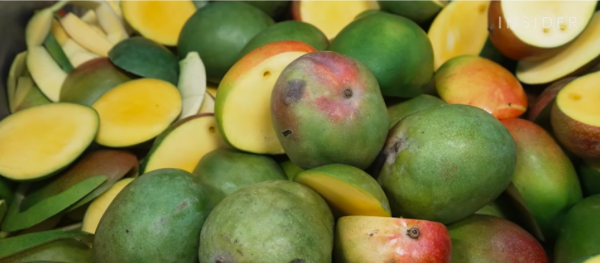

 Tiếng Việt
Tiếng Việt 日本語
日本語
Hi, we are a group of high school students, and we are interested in looking into your research study. We would like to know more about what additive was added to the mixture to create a leather-like material. Thank you so much.
I am currently residing South Africa, where mangoes are in abundance. I am interested in manufacturing vegan leather.